Envelope residue 375 substitutions in simian-human immunodeficiency viruses enhance CD4 binding and replication in rhesus macaques
- PMID: 27247400
- PMCID: PMC4914158
- DOI: 10.1073/pnas.1606636113
Envelope residue 375 substitutions in simian-human immunodeficiency viruses enhance CD4 binding and replication in rhesus macaques
Abstract
Most simian-human immunodeficiency viruses (SHIVs) bearing envelope (Env) glycoproteins from primary HIV-1 strains fail to infect rhesus macaques (RMs). We hypothesized that inefficient Env binding to rhesus CD4 (rhCD4) limits virus entry and replication and could be enhanced by substituting naturally occurring simian immunodeficiency virus Env residues at position 375, which resides at a critical location in the CD4-binding pocket and is under strong positive evolutionary pressure across the broad spectrum of primate lentiviruses. SHIVs containing primary or transmitted/founder HIV-1 subtype A, B, C, or D Envs with genotypic variants at residue 375 were constructed and analyzed in vitro and in vivo. Bulky hydrophobic or basic amino acids substituted for serine-375 enhanced Env affinity for rhCD4, virus entry into cells bearing rhCD4, and virus replication in primary rhCD4 T cells without appreciably affecting antigenicity or antibody-mediated neutralization sensitivity. Twenty-four RMs inoculated with subtype A, B, C, or D SHIVs all became productively infected with different Env375 variants-S, M, Y, H, W, or F-that were differentially selected in different Env backbones. Notably, SHIVs replicated persistently at titers comparable to HIV-1 in humans and elicited autologous neutralizing antibody responses typical of HIV-1. Seven animals succumbed to AIDS. These findings identify Env-rhCD4 binding as a critical determinant for productive SHIV infection in RMs and validate a novel and generalizable strategy for constructing SHIVs with Env glycoproteins of interest, including those that in humans elicit broadly neutralizing antibodies or bind particular Ig germ-line B-cell receptors.
Keywords: CD4; HIV-1 envelope; HIV/AIDS; SHIV.
Conflict of interest statement
The authors declare no conflict of interest.
Figures
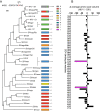

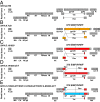
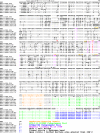

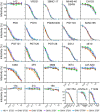

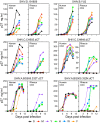


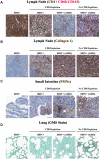



References
Publication types
MeSH terms
Substances
Associated data
- Actions
- Actions
- Actions
Grants and funding
- R01 AI094604/AI/NIAID NIH HHS/United States
- R01 AI078788/AI/NIAID NIH HHS/United States
- P01 AI131251/AI/NIAID NIH HHS/United States
- R01 AI118549/AI/NIAID NIH HHS/United States
- R21 AI087383/AI/NIAID NIH HHS/United States
- HHSN261200800001C/RC/CCR NIH HHS/United States
- HHSN261200800001E/CA/NCI NIH HHS/United States
- R33 AI087383/AI/NIAID NIH HHS/United States
- UM1 AI100645/AI/NIAID NIH HHS/United States
- P30 AI045008/AI/NIAID NIH HHS/United States
- P01 GM056550/GM/NIGMS NIH HHS/United States
- P01 AI088564/AI/NIAID NIH HHS/United States
- R01 AI124982/AI/NIAID NIH HHS/United States
- R37 AI091476/AI/NIAID NIH HHS/United States
LinkOut - more resources
Full Text Sources
Other Literature Sources
Medical
Molecular Biology Databases
Research Materials

